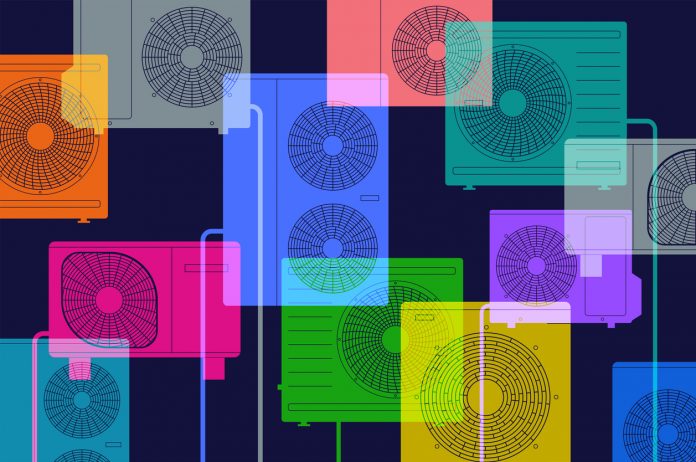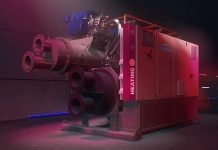As the refrigeration industry has matured, natural refrigerants have progressively been displaced by synthetic alternatives. However, Tim Mitchell, Sales Director of Klima-Therm, says a greater focus on environmental considerations could reverse this trend
Natural refrigerants – principally ammonia, hydrocarbons such as propane, and carbon dioxide (CO2) – have existed since the mid-1800s. However, everything changed in 1928 when American mechanical and chemical engineer Thomas Midgley Jr. helped develop the first synthetic refrigerant, the chlorofluorocarbon (CFC) R12, or ‘Freon’.
This breakthrough was followed by the development of a slew of manmade refrigerants, culminating in the creation of hydrofluoro-olefins (HFOs), which are viewed as ‘fourth-generation’ refrigerants after CFCs, hydrochlorofluorocarbons (HCFCs), and hydrofluorocarbons (HFCs).
But the signs are that natural refrigerants are making something of a comeback as decarbonisation and net zero goals become top priorities.
Natural refrigerant benefits
Natural refrigerants have a great deal to commend them. For example, in heat pump applications, natural refrigerants are more efficient than synthetics. In other words, they achieve a higher coefficient of performance (CoP).
They are also more environmentally friendly because they have a lower global warming potential than synthetic refrigerants.
Furthermore, natural refrigerants are more efficient than their chemical equivalents at very high temperatures.
Finally, natural refrigerants tend to be cheaper than their synthetic counterparts, largely because the latter demand more processing. And total cost of ownership is more competitive with natural refrigerants because they use less energy and maintenance costs are lower.
Types of natural refrigerants
Two of the main natural coolants – ammonia and propane – have a range of uses. The former, for example, is used extensively in large- scale refrigeration applications such as ice rink cooling as well as district cooling systems, supermarkets, and convenience stores. It is even used
to air condition the International Space Station.
Propane is typically used in low-to- medium temperature refrigeration applications like freezers and refrigerated display cases.
However, arguably the best natural refrigerant is CO2. Using CO2 as a coolant for air conditioning systems can help save energy and reduce the carbon emissions that increase the likelihood of global warming.
The ‘LETI Climate Emergency Design Guide – How new buildings can meet UK climate change targets’, says:
“Besides having zero Ozone Depletion Potential (ODP), CO2 also has an ultra-low Global Warming Potential (GWP) of 1 (unlike most currently used refrigerants, the most common of which typically have GWPs in the range of 1400 to 2100), is non-flammable (unlike almost all other natural refrigerants) and is non-toxic (unlike ammonia, which is often used as a refrigerant in large scale industrial applications).
“But perhaps of most interest in the context of Future Heat for buildings is the ability of CO2 heat pumps to deliver domestic hot water (DHW) temperatures at relatively high efficiencies compared with most currently available heat pumps.”
Since CO2 is a naturally occurring substance, it forms part of natural biogeochemical cycles and does not, therefore, create persistent waste in the atmosphere, water, or biosphere. Moreover, CO2 is neither toxic nor flammable, relatively cheap, sustainable, and future-proof. It is also far easier and cheaper to dispose of than manmade refrigerants. See the box for more benefits.
CO2, a green alternative to traditional refrigerant-based cooling
Taken together, this makes for a forceful argument for CO2 as a green alternative to traditional refrigerant- based cooling media.
High-efficiency heat pumps
But beware. The refrigerant is by no means the only element of a cooling system that matters when considering the specification of a heat pump. Clearly, the right technology is also crucial. That’s why it pays to specify a proven, highly efficient unit.
One example of this is the Enerblue HP90/HP90W heat pump. With a heating capacity of 14.5 to 133.2kW, this CO2 refrigerant gas-based range is designed for most commercial/ industrial sectors and can heat water to temperatures up to 90°C with an external temperature of -20°C.
It boasts a host of features and benefits, including semi-hermetic reciprocating compressors, axial fans, total cool recovery, and the ability to provide heating. This leads to high thermodynamic performance and zero environmental impact, making it an excellent future-proof solution for both new and retrofit buildings.
Available in several configurations – including water to water, air to water, and air to water with cool recovery – the HP90/HP90W heat pump is flexible enough to suit most applications.
The working principle involves multiple- layout tanks that ensure stratification. Once the hot water storage is heated up, it switches off, and the system is ready to go. As the user starts consuming at a high demand, the water tanks empty, and the unit switches on again. When peak demand is over, the tanks are refilled, and the unit switches off again.
For example, in a hotel application, the heat pump system will typically have two main peak demands each day – one in the morning when guests wake up and take a shower and another in the evening when they return to the hotel and get ready for dinner. The hot water storage is refilled at night, often taking advantage of favourable tariffs.
Meanwhile, the Engie range of heat pumps, available from 150 to 1,500kW, is water to water only and more suitable for industrial applications.
Its high-temperature heat pumps provide hot water temperatures of up to 110°C. Low heating return temperatures in the so-called ‘transcritical’ CO2 recycle process result in lower energy loss than conventional heat pumps with a subcritical cycle.
Heating processes such as drinking water preparation and process water heating allow low return temperatures and can therefore be implemented with higher-performance CO2 heat pumps.
Klima-Therm offers a wide range of heat pumps, including CO2 and propane options. For more information, visit: www.klima-therm.co.uk.
Contributor Details
More About Stakeholder
-
Klima-Therm: The heat pump and chiller experts
Klima-Therm Ltd. are the the heat pump and chiller experts who are pioneering, sustainable HVACR technology combined with exceptional customer service.
Editor's Recommended Articles
-
Must Read >> Decarbonising school heating systems
-
Must Read >> Decarbonisation of heat in the public sector















